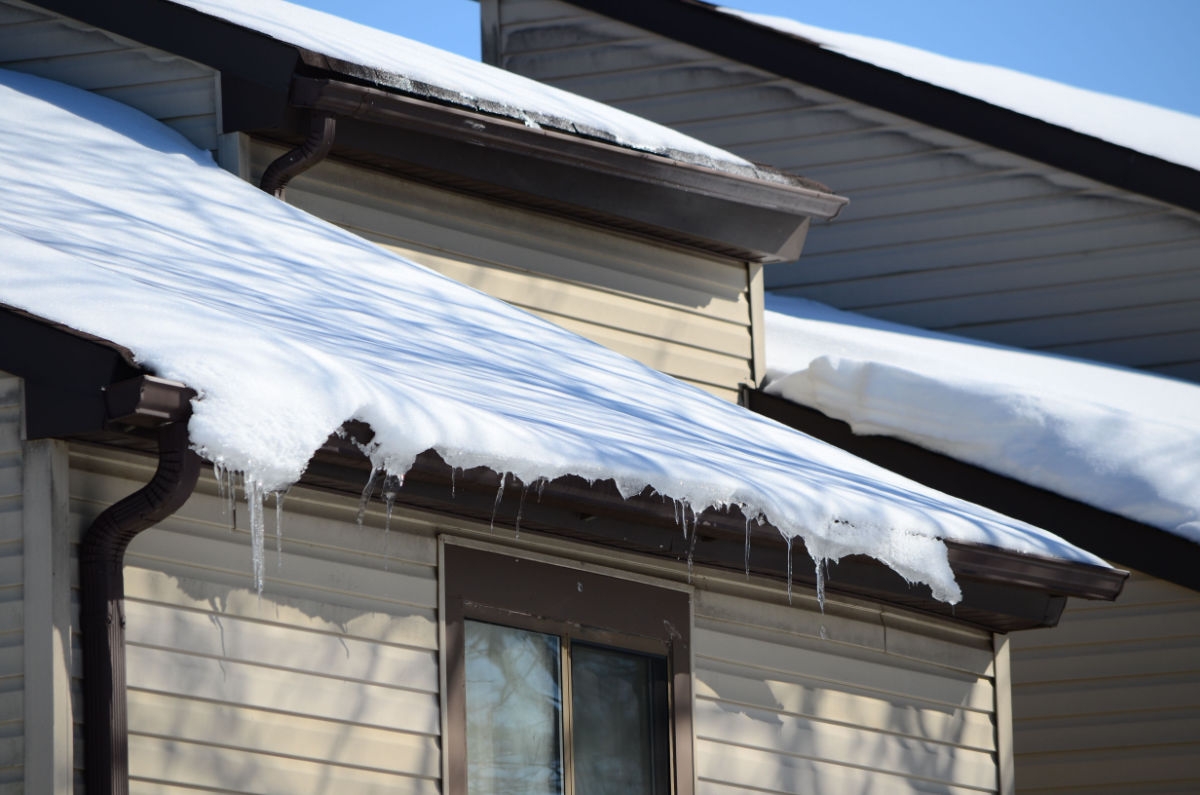5.0
109+Call
215-713-4178

How Do Freeze-Thaw Cycles Affect My Roof?

The changing seasons in Philadelphia make it challenging to protect your roof. Snow and ice during the winter give way to hot and humid days in the summer. These dramatic temperature changes affect many areas of your home, including your roof.
Regarding weather conditions, freeze-thaw cycles are one of the biggest threats to a roof. But what is a freeze-thaw cycle, and how does it affect your roof?
Read on to learn about freeze-thaw cycles and tips to prevent roof damage. The local experts at Philadelphia Quality Roofing install copper flashing, siding services, and shingle and roof hole repair in Philadelphia, PA. We offer a wide range of services to keep your home in top condition.
What Is a Freeze-Thaw Cycle?
Moisture is always present in the air and seeps into anything it can. Water molecules expand when temperatures drop, adding pressure to whatever contains them.
Rising temperatures cause water molecules to thaw and become smaller. When water expands and contracts during a period, this is known as the freeze-thaw cycle.
Freeze-thaw cycles describe temperature changes resulting in water molecules’ freezing and thawing. This condition naturally occurs when temperatures hover around the freezing point.
How Freeze-Thaw Cycles Damage a Roof
Freeze-thaw cycles damage a roof because there isn’t any flexibility in roofing materials. For example, concrete and roofing tiles absorb moisture, but there isn’t any give in these materials to allow expansion when freezing temperatures occur.
The lack of flexibility means that water molecules can expand and cause cracks and breakages in these rigid objects as it expands. As temperature increases and decreases several times per week, this creates multiple incidents of pressure. These cycles apply pressure to your roof’s shingles and cause permanent damage.
Signs of Freeze-Thaw Roof Damage
Freeze-thaw cycles create several problems for your roof, but they may look different. Here are some common effects of the freeze-thaw cycle and how they appear on your roof.
Small or Uneven Space Between Shingles
Roof shingles should have an even amount of space between them. If they appear uneven or you notice movement, expansion, and contraction due to the freeze-thaw cycle has affected them.
Ice Dams
Ice dams appear when the heating on your roof is inconsistent or when freeze-thaw cycles occur frequently. In these instances, snow melts and runs down your roof as water. Then, the water gets stuck behind shingles and causes pressure beneath them when it refreezes.
Damaged Flashing
Roofs have metal flashing sheets that seal the cracks on the sides and seams of a roof. If you notice that the flashing on your eaves, peak, or chimney has separated from an area, ice dams have likely caused damage. The gaps created can allow moisture to enter your home and cause water damage.
How to Protect Your Roof Against Freeze-Thaw Cycles
Clear Snow From Your Roof
You can protect your roof from the effects of freeze-thawing by clearing snow from your roof as soon as possible. Many people contact a professional roofing company to handle this job safely. Removing snow from your roof prevents ice dams and their long-term effects.
Call a Professional to Remove Ice Dams
If ice dams have already formed on your roof, call a professional roofing company to remove them. Ignoring ice dams will only increase the possibility of long-term damage to your roof and home.
Ventilate Your Attic
One of the best steps for protecting your roof over the long term is to ventilate your attic. This airflow area keeps a consistent temperature for your roof and prevents ice from forming. In addition, it minimizes the chance of roofing problems occurring from freeze-thaw cycles.
Schedule Regular Roofing Inspections
The best way to protect your roof against freeze-thaw cycles is by scheduling regular roofing inspections. A professional will inspect your roof and provide services to protect it from wear and tear. It would be best if you did this at least once or twice a year to prevent more extensive repairs in the future.
Contact Philadelphia Quality Roofing Today!
Whether you need to schedule a roofing inspection or are interested in roof deck installation in Philadelphia County, PA, we have a team of certified professionals to get the job done. Contact us today or browse our website for our full range of services.